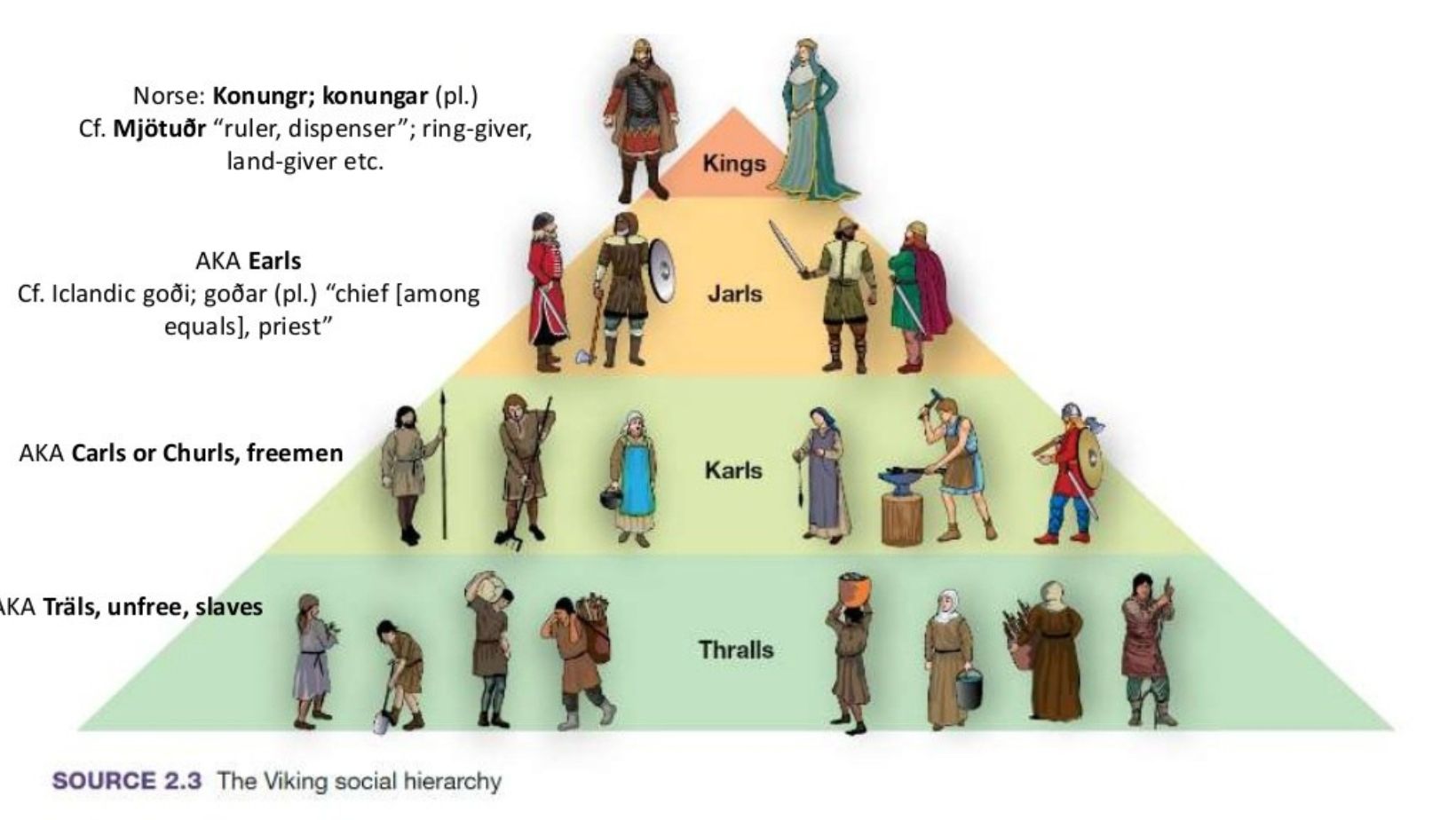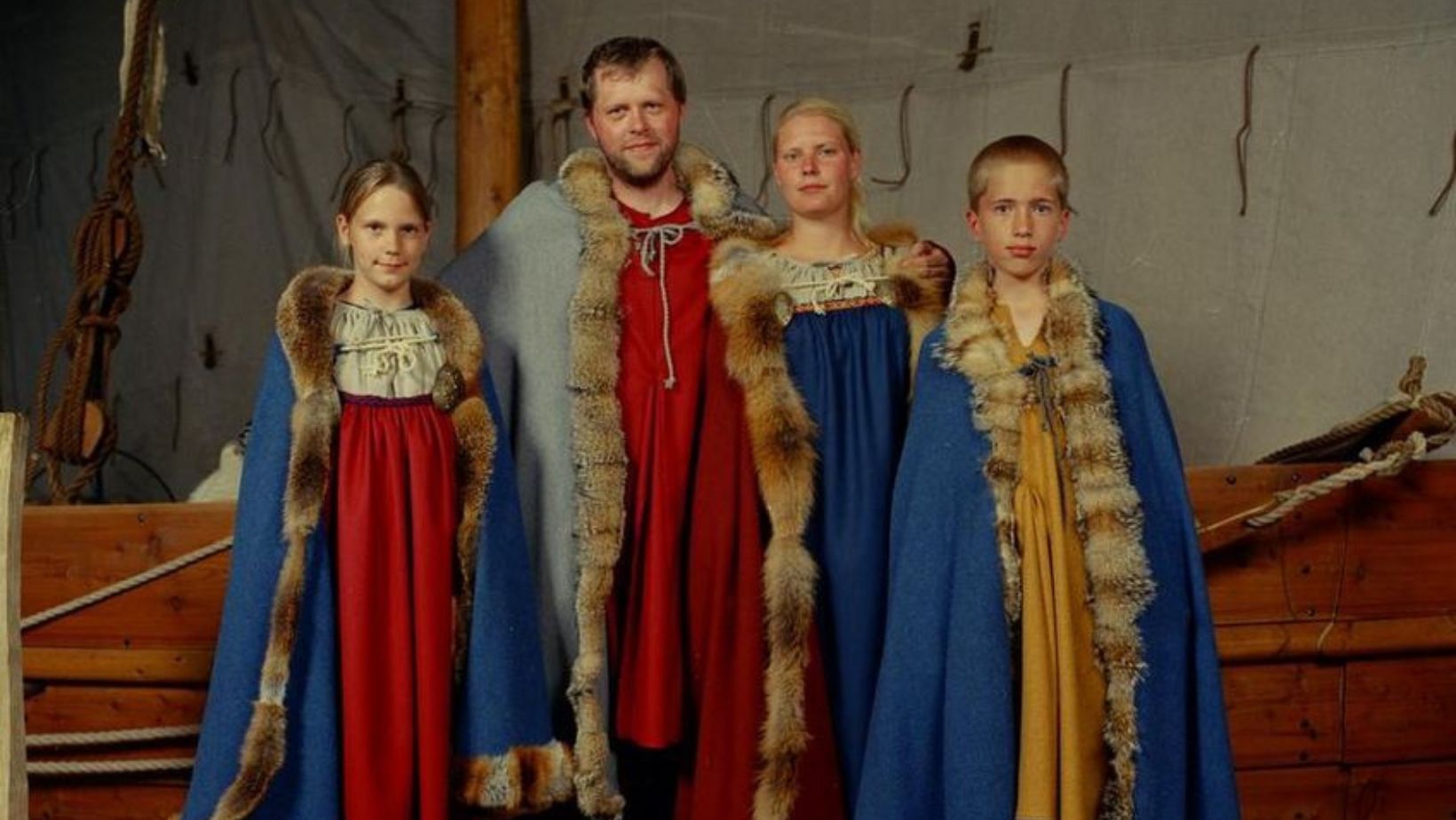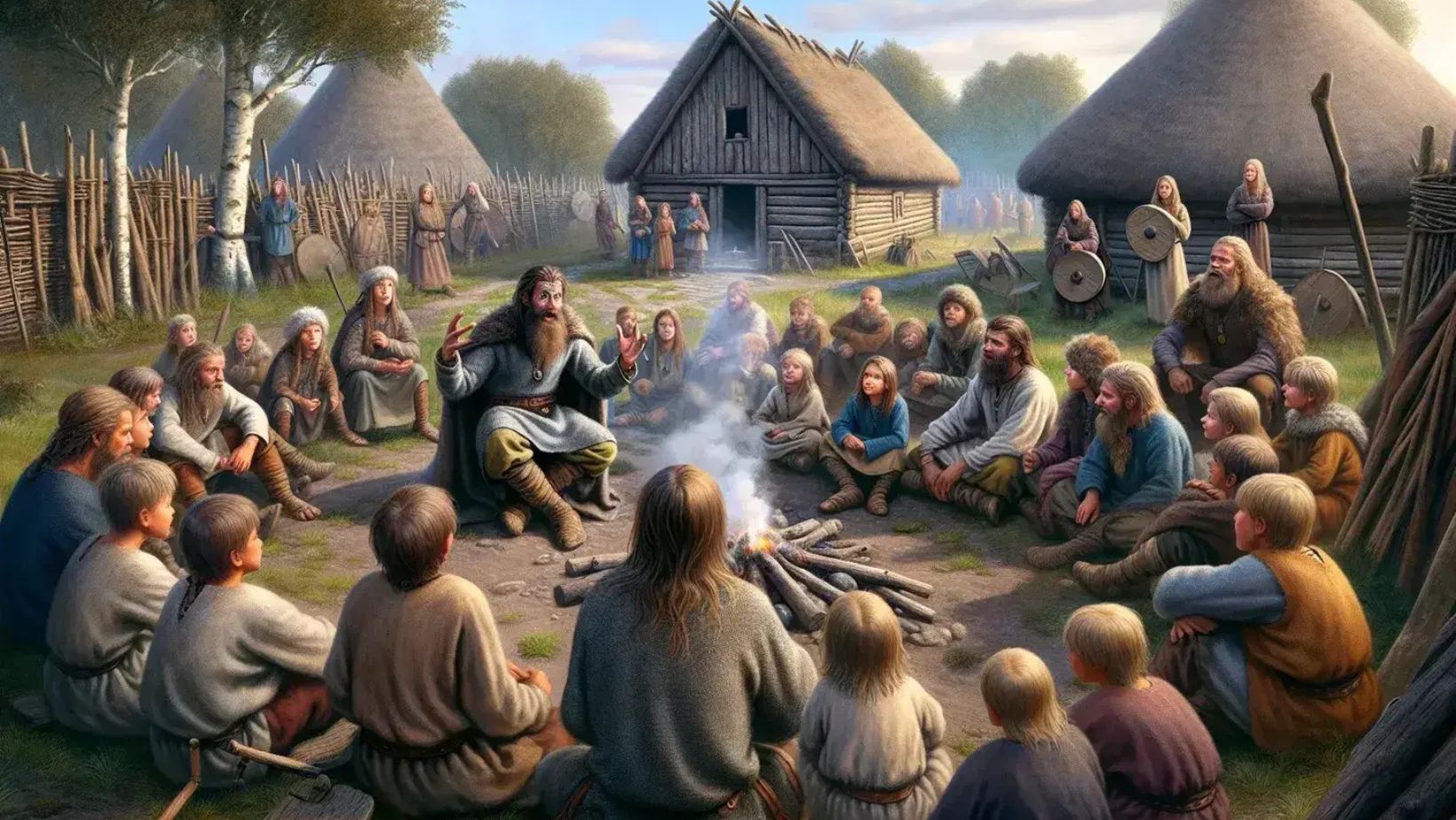Have you ever imagined what life was like for the Vikings beyond their fierce battles and grand ships? Viking society was vibrant and diverse, filled with farmers, traders, and skilled craftsmen. They had a rich culture with deep-rooted traditions and beliefs that shaped their daily lives. Understanding the Life of Vikings and their activities helps us grasp their identity, values, and social structures. By delving into the routines, roles, and relationships of Vikings, we can uncover the essence of a fascinating civilization that has captivated our imaginations for centuries. Join us as we explore the everyday life of these remarkable people!
Viking Society Structure: Life of Vikings

Viking society was organized into distinct social classes: nobles, freemen, and thralls. Nobles, known as jarls, were the ruling class. They owned large estates and held significant power in both local and regional matters. Their role included making decisions about governance, warfare, and land management.
Freemen, or karls, made up the middle class. They were landowners and skilled workers, such as farmers, craftsmen, and traders. Freemen had the right to participate in local assemblies called þing, where they could voice opinions and influence decisions. They played a vital role in the economy and society, contributing to trade and community development.
Viking Homes and Architecture: Life of Vikings
Viking longhouses were the primary dwellings of Viking families. These long, narrow structures could be quite large, often accommodating extended families and livestock under one roof. Typically, longhouses measured between 30 to 100 feet in length, allowing ample space for various activities.
Construction materials varied based on location. In forested areas, builders used timber for the frame, while those in less wooded regions often utilized stones and turf. The roofs were commonly made of thatch or sod, providing insulation against cold weather. This combination of materials ensured durability and warmth in the harsh northern climates.
The interior of a longhouse was practical and communal. A central hearth provided light and warmth, with smoke venting through an opening in the roof. Living spaces were usually divided by low walls or curtains, creating areas for sleeping and storage. This layout fostered a close-knit family environment, where daily activities like cooking and socializing occurred in shared spaces.
Daily Routines and Schedules
Daily routines in Viking society varied by gender and age. Men typically engaged in farming, hunting, or crafting. Women managed the household, took care of children, and prepared food. Children contributed by helping with chores, learning skills from their parents, and playing outside.
Seasonal changes significantly affected these routines. In spring and summer, families focused on farming, planting crops like barley and rye. Harvest time in the fall was busy, with everyone working together to gather and store food for winter. Fishing was also crucial during warmer months, providing a vital protein source.
In winter, activities shifted. With farming on hold, Vikings turned to indoor tasks like weaving, woodworking, and storytelling. Some men might participate in raiding or trading expeditions, while others prepared for the next planting season. These seasonal variations created a rhythm to Viking life, ensuring survival and community bonding throughout the year.
Food and Diet: Life of Vikings
The Viking diet was diverse and heavily relied on locally available resources. Common foods included grains like barley, oats, and rye, which were used to make bread and porridge. Vegetables such as carrots, onions, and cabbage were staples, while dairy products like cheese and butter complemented meals. Fish, especially herring and salmon, was a significant protein source, along with meat from livestock such as pigs, cattle, and sheep.
Cooking methods were simple yet effective. Vikings often boiled, roasted, or baked their food over an open fire. They used iron pots and griddles to prepare meals, with the hearth serving as the central cooking area. Spices and herbs, though limited, were used to enhance flavors.
Preservation techniques were essential for survival. Drying and smoking fish and meat helped extend their shelf life, while pickling vegetables ensured they could be stored through winter months. Additionally, fermenting foods created preserves and beverages like mead. These methods allowed Vikings to make the most of their resources and sustain their families year-round.
Clothing and Fashion: Life of Vikings

Viking clothing was both practical and stylish, suited to the cold northern climate. Men typically wore wool or linen tunics that reached their knees, paired with trousers or leggings. Women donned long dresses, often layered with a woolen apron and secured with brooches. Cloaks made of animal hides or woven fabrics were essential for warmth during colder months.
Textiles held great importance in Viking society. Weaving and spinning were vital skills, often performed by women. High-quality fabrics indicated social status, with wealthier individuals wearing more elaborate designs and finer materials. Colorful dyes made from natural sources added vibrancy to garments, reflecting both personal and cultural identity.
Jewelry was also significant in Viking fashion. Items like brooches, necklaces, and rings were made from materials such as silver, bronze, and gold. These pieces not only served decorative purposes but also displayed wealth and status. Jewelry often featured intricate designs and symbols, connecting the wearer to their heritage and beliefs. Overall, clothing and accessories were essential aspects of daily life, highlighting craftsmanship and personal expression.
Work and Occupations: Life of Vikings
Viking society had a diverse range of trades and crafts essential for daily life. Farming was the backbone of the economy, with families growing crops like barley, rye, and oats. Each household worked together during planting and harvesting seasons, ensuring food security. Smithing was another important occupation, as blacksmiths forged tools, weapons, and decorative items from iron and bronze.
Fishing was vital, especially in coastal areas. Many Vikings relied on the sea for sustenance, using nets and lines to catch fish like herring and cod. This not only provided nutrition but also contributed to trade with other communities. Additionally, Vikings were skilled traders, exchanging goods such as furs and crafted items.
Gender roles played a significant part in labor division. Men typically engaged in farming, fishing, and smithing, often participating in raiding and trading expeditions. Women managed the household, took care of children, and produced textiles. They also played roles in agriculture and food preparation, showcasing a balanced division of labor that was essential for the community’s survival and prosperity.
Religion and Spiritual Practices: Life of Vikings
Norse mythology played a central role in Viking religion, featuring a pantheon of gods and goddesses. Key figures included Odin, the all-father and god of wisdom; Thor, the god of thunder; and Freyja, the goddess of love and fertility. These deities were believed to influence various aspects of life, from farming to warfare. Myths and legends were passed down orally, shaping the Vikings’ understanding of their world.
Worship often took place in sacred groves or outdoor altars, rather than formal temples. Vikings conducted rituals to honor the gods, seeking their favor and protection. Sacrifices, including animals and, in some cases, valuables, were common during these ceremonies. These offerings were believed to ensure good harvests, safe travels, and successful raids.
Daily life was infused with spiritual beliefs. Many Vikings practiced rituals to honor their ancestors, seeking guidance and blessings from the past. Household gods, or “húsfreyja,” were also venerated, with offerings made at home to protect the family. Overall, spirituality was woven into the fabric of Viking life, guiding their actions and decisions.
Recreation and Leisure Activities: Life of Vikings
Vikings engaged in various games and sports during their leisure time. Popular activities included board games like Hnefatafl, a strategy game similar to chess. They also enjoyed physical competitions, such as wrestling and archery, which promoted strength and skill. These activities fostered camaraderie and helped develop important abilities for survival.
Entertainment was vital in Viking culture, with storytelling being a cherished tradition. Skalds, or poets, recited tales of gods, heroes, and historical events, keeping oral history alive. These stories not only entertained but also conveyed moral lessons and cultural values. Gatherings around the fire were common, where families and communities would share tales and experiences.
Music also played an essential role in recreation. Vikings used instruments like the lyre and the flute to accompany songs, celebrating both daily life and special occasions. Singing and music helped strengthen community bonds and provided a sense of identity. Overall, these leisure activities were important for social cohesion and the preservation of Viking culture, enriching their lives beyond work and survival.
Trade and Economy: Life of Vikings
Viking trade networks were extensive, reaching across Europe and beyond. Vikings traded goods with neighboring cultures, exchanging items like furs, timber, and amber for silver, spices, and textiles. Key trade routes included the rivers of Eastern Europe and the seas surrounding the British Isles. Major trading centers, such as Birka and Hedeby, facilitated commerce and cultural exchange.
Trade played a crucial role in everyday life. It provided access to resources not available locally, enhancing the quality of life for Viking communities. Items like iron tools and luxury goods improved farming and craftsmanship. Additionally, trade helped sustain relationships with other societies, fostering alliances and mutual benefits.
Social interaction was also a key aspect of trade. Markets served as gathering places where people exchanged not only goods but also news and ideas. These interactions built trust and strengthened community ties. Through trade, Vikings enhanced their economy while establishing a reputation as skilled merchants and navigators, contributing to their legacy as a prominent culture in history.
Viking Education and Learning: Life of Vikings

Viking education was largely informal and focused on practical skills. Children learned through hands-on experiences, helping their parents with daily tasks. Young boys often accompanied their fathers on hunting and trading trips, while girls learned domestic skills from their mothers. This system ensured that essential knowledge was passed down through generations.
Oral tradition played a vital role in Viking learning. Stories, myths, and legends were shared by skalds and elders around the hearth, captivating listeners of all ages. These narratives not only entertained but also taught moral lessons and cultural values. Oral storytelling helped preserve history and foster a sense of identity within communities.
As young adults, Vikings were expected to master specific skills related to their future roles. Training in crafts, farming, and navigation was common, preparing them for adulthood. Additionally, informal gatherings often served as opportunities for knowledge sharing and cultural exchange. Through these methods, Vikings ensured that each generation was equipped to contribute to their society.
Conclusion: Life of Vikings
Viking daily life was complex and multifaceted, encompassing various aspects such as work, family roles, religion, and recreation. Each element, from farming and trading to storytelling and craftsmanship, played a vital role in shaping their culture. Understanding these daily routines and practices enriches our perspective on Viking history, moving beyond their reputation as fierce warriors. It highlights their skills, values, and the strong sense of community that defined their society, providing a fuller picture of a remarkable civilization that has left a lasting legacy in our world.
FAQs
What were the main types of Viking ships?
Vikings used various ships for different purposes, primarily longships for raiding and trading, and knarrs for transporting goods. Longships were sleek and fast, allowing for quick raids, while knarrs were broader and designed for stability in rough waters.
How did Viking society view women?
Women in Viking society held significant roles, managing households and engaging in trade. They could own property, initiate divorce, and were involved in religious practices, although their status varied based on social class.
What were the main sources of entertainment for Vikings?
Vikings enjoyed various forms of entertainment, including games like Hnefatafl, storytelling, music, and feasting. Celebrations often included poetry recitals and dance, fostering community bonding.
Did Vikings have a written language?
Yes, Vikings used runes, a writing system made up of characters known as runes. These were primarily used for inscriptions on stones, wood, and metal, often for commemorative or magical purposes.
How did Vikings manage their health and hygiene?
Vikings placed importance on cleanliness, regularly bathing in rivers or using hot springs. They used natural remedies and herbs for health issues, and their diet, rich in fish and vegetables, contributed to overall well-being.

